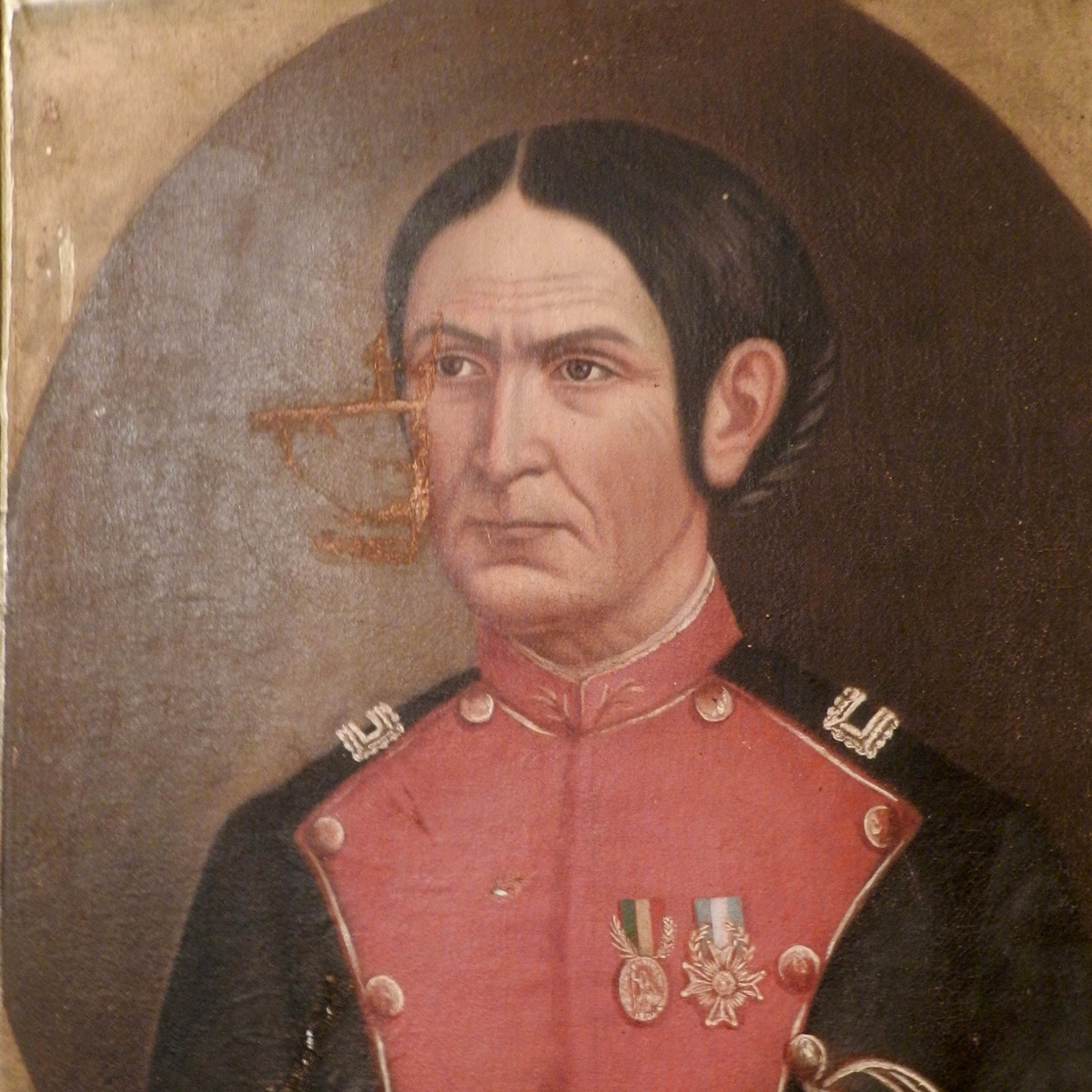
The dance of Tango originated in the second half of the XIX century in the area designated Rio de la Plata, on the outskirts of port cities like Buenos Aires, Montevideo, and Rosario.
Historically, this area was an essential part of the Spanish Colonial Empire, which gained its independence from Feudalist Catholic Monarchic Spain towards integration into a Western capitalist globalized economy. This economic revolution was led by the United Kingdom and the United States, at the beginning of the 1800s, as a direct consequence of the transformations that swept through Europe due to the Industrial Revolution, the French Revolution, and the Napoleonic Wars.
The elite class that led this process of transformation, although not unified – as many internal conflicts arose after the final defeat of the Spanish Army – were inspired by the ideas of the French and American Revolutions and saw industrialized countries like the United Kingdom as beacons of civilization, superior to the models of a feudalist Spain, and Aboriginal Native nations of America.
Since the arrival of the first Spanish expedition to the Rio de la Plata under the command of Juan Diaz de Solís (1515), the changes that affected this territory were very slow for almost 300 years.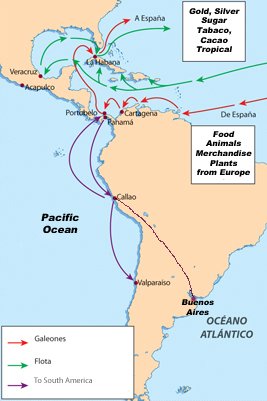 During that time, Spain allowed its colonies to only trade with Spain and other Spanish colonies. To avoid ships being captured by enemy nations and pirates, Spain established a unique route to transit goods between the settlements and Spain. Unfortunately, this route was not favorable to Buenos Aires, making goods too expensive and scarce to the inhabitants of Rio de la Plata. Consequently, smuggling became the only profitable business for its population and the only way to acquire what it needed to survive.
During that time, Spain allowed its colonies to only trade with Spain and other Spanish colonies. To avoid ships being captured by enemy nations and pirates, Spain established a unique route to transit goods between the settlements and Spain. Unfortunately, this route was not favorable to Buenos Aires, making goods too expensive and scarce to the inhabitants of Rio de la Plata. Consequently, smuggling became the only profitable business for its population and the only way to acquire what it needed to survive.
The first Spanish colonists in Argentina and Uruguay could see that the land was excellent for cattle. The animals prospered and reproduced rapidly, creating a source of leather. In an area with no other natural resources like stones, metals, or wood, this new resource became the primary material to create the necessary tools for everyday life activities. Leather was also the only product available to exchange for smuggling goods into the area. Since the cattle were wild, there was no reliable tracking system in place, which was ideal for those in the area looking to make the most of this resource. Cattle producers ("estancieros") were one of the leading forces behind gaining independence to end the monopoly imposed by Spain.
In 1776, this territory was given more autonomy, becoming the "Virreinato del Rio de La Plata," with the capital in Buenos Aires, mainly because Spain wanted to end the growing smuggling business in the area and profit by regulating the trade.
The isolation of this territory geographically – due to the enormous distance from Spain – and politically and economically – due to the strict trade policies – shaped the characteristics of its population and created an environment that allowed for the appearance of first, the "gaucho," and then later, Tango.
The early expeditions in Rio de la Plata comprised men who did not integrate well into Spanish society. In addition, the men who commanded these expeditions sometimes behaved in a very authoritarian way, which is understandable due to the harsh conditions and the riskiness of expeditions at the time. Historical records show that the first gauchos descended from Andalucians and Moors of North African descent, who accepted Christianity only to avoid persecution. Once these men reached America, many broke loose from the expeditions and lived as nomads, living off the wild cattle that rapidly populated the lands and coexisting with the natives.
In "Tierras de nadie" (No man's land), the area that is today the border between Uruguay and Brazil, the first gauchos (1771) lived off the ground and hunted wild cattle, which they sold to the population of what is known today as Rio Grande do Sur, Brazil.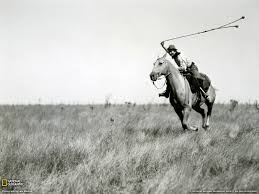
To hunt wild cattle, the gauchos used various techniques. One method, which they learned from the natives, was the use of "boleadoras", an artifact made of three balls of hardwood, stone, or metal, lined with leather and tied together with leather strings, which they skillfully launched at the rear legs of the animal to make it fall and capture it alive, and keeping it in good condition, thereby maximizing its profitability.
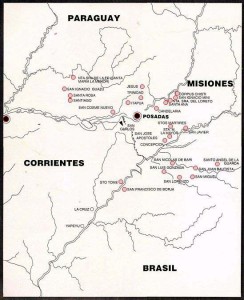 Another origin of gauchos came from the Jesuit Missions after they were dismantled in the area now known as the border between Argentina, Brazil, and Paraguay, populated mainly by natives of the Guaraní nations. These missions were efficiently organized and very productive. For that reason, the missions attracted the attention of the powers of the time, who were suspicious of their prosperity.
Another origin of gauchos came from the Jesuit Missions after they were dismantled in the area now known as the border between Argentina, Brazil, and Paraguay, populated mainly by natives of the Guaraní nations. These missions were efficiently organized and very productive. For that reason, the missions attracted the attention of the powers of the time, who were suspicious of their prosperity.
The gauchos developed a new and genuinely local lifestyle and culture produced by the mix between the members of the expeditions and the American natives. They prized independence, self-reliance, honor, friendship, hospitality, loyalty, rejection of arbitrary authorities, courage, virility, resilience in facing adversity, and appreciation for a life based on simplicity and harmony with nature. These values are still the ones that guide the identity of Argentinians and Uruguayans. More specifically, these values permeate Tango and are most evident in the lyrics, as illustrated in the song below.
"Tango que sos un encanto
De quien escucha tus sones,
Tango que atraes corazones,
Con tus dulces cantos
Y tus bandoneones.
Sos de cuna humilde,
Y has paseado el universo,
Sin más protocolo,
Que tu música y tus versos,
Para abrirte paso
Has tenido que ser brujo,
Por tus propios medios
Lograste tu triunfo.
Tango que sos un encanto,
Hoy vive tu canto,
En mi corazón.
¡Tango!, ¡Tango!
Tango bravo, tango lindo,
Tango noble, tango guapo
Tango hermano
De mis largas noches tristes,
Compañero de mi pobre corazón.
Tango bravo, fascinante,
¡Tango brujo!,
Tango bravo, combatido,
Tango bravo,
Tango gaucho
Que a pesar de tanta contra
Defendiste con altura,
Tu bravura de varón."
“Tango brujo”, Francisco Canaro.
"Tango Brujo” by Juan D’Arienzo y su Orquesta Típica with Héctor Mauré, 1943.
The gauchos represented a continuity of the Middle Age Knights of Spain and Europe. They were skillful horseback riders and were very proud of their ability in the fight. The gaucho's weapon was the "facón", a 16-inch knife – that could be seen as a shortened Knight sword. In general, the "facones" were made from bayonets and used alone or in combination with the "rebenque" (a sort of whip) or the "poncho" (an outer garment designed to keep the body warm) rolled on the left arm and used as a shield. The "facón" was not only a weapon but also an indispensable everyday tool, as well as the "rebenque" and the "poncho".
The "facón" was not only a weapon but also an indispensable everyday tool, as well as the "rebenque" and the "poncho".
The gauchos trained their fighting skills in a game called "visteo," in which they used a wooden stick burned at one extreme or the index finger colored with ashes or grease. They played inside a small marked square called "cancha." The game's primary goal is to force the opponent out of the square.
"Tome mi poncho... No se aflija...
¡Si hasta el cuchillo se lo presto!
Cite, que en la cancha que usté elija
he de dir y en fija
no pondré mal gesto.
Yo con el cabo 'e mi rebenque
tengo 'e sobra pa' cobrarme...
Nunca he sido un maula, ¡se lo juro!
y en ningún apuro
me sabré achicar."
“Mandria”, Juan Rodríguez, Francisco Brancatti and Juan Velich.
“Mandria” by Juan D’Arienzo y su Orquesta Típica with Alberto Echagüe in vocals, 1939.
The body language that came out of this physical training eventually shaped the Tango dance.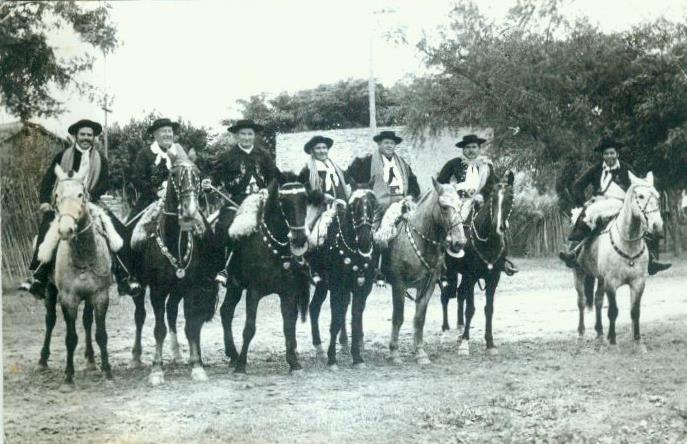 The gauchos were horseback riders by nature. In their childhoods, they learned to ride horses at the same time; they learned how to walk. Similarly to the cattle that the Spanish brought, the horses brought over from Spain reproduced very quickly, providing the gauchos with a large pool of horses to use and trade. They call their horses "pingo" and "flete."
The gauchos were horseback riders by nature. In their childhoods, they learned to ride horses at the same time; they learned how to walk. Similarly to the cattle that the Spanish brought, the horses brought over from Spain reproduced very quickly, providing the gauchos with a large pool of horses to use and trade. They call their horses "pingo" and "flete."
"Pasó la tranquera y el pingo miraba,
tal vez extrañao de no verla más,
y el gaucho le dijo: ¡No mire, mi pingo,
que la patroncita ya no volverá!"
“Lonjazos”, Andrés Domenech and Jesús Fernández Blanco.
"Lonjazos" by Rodolfo Biagi y su Orquesta Típica with Carlos Acuña in vocals, 1943.
During the 1800s, when the gaucho moved into the cities, he became the "compadre." This move required him to give up his horse and shorten his knife. The "compadre" will show up again later about Tango.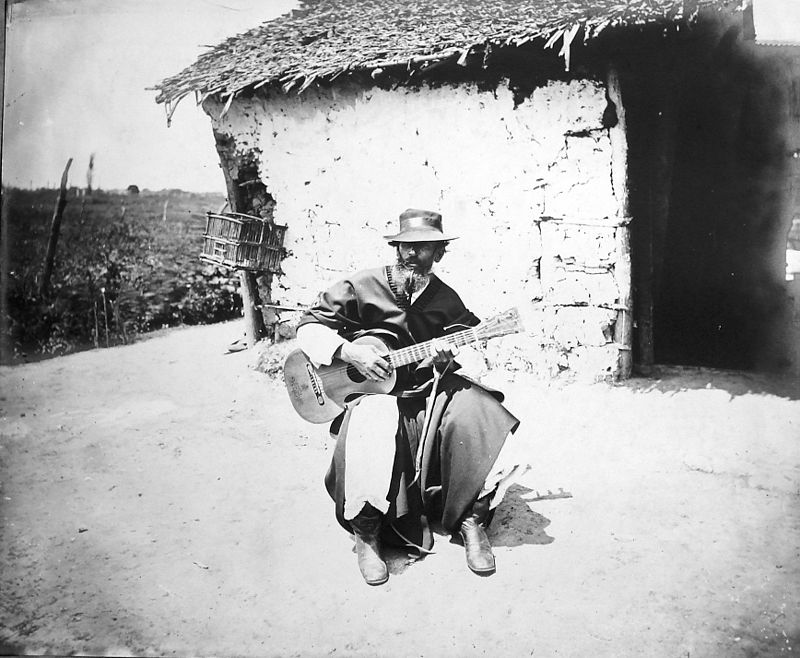 The gaucho’s favorite musical instrument was the guitar (”guitarra criolla”), inherited from Spain (guitarra española.) The poetry of the gauchos accompanied by a guitar is called "payada", and the performer "payador."
The gaucho’s favorite musical instrument was the guitar (”guitarra criolla”), inherited from Spain (guitarra española.) The poetry of the gauchos accompanied by a guitar is called "payada", and the performer "payador."
The "payada" evolved into "milonga" when Gabino Ezeiza (1858-1916), an Afro-Argentine payador, introduced its rhythm derived from African Candombe.
The landscape of Argentina and Uruguay is said to have influenced the gauchos deep into their character.
"Hay una hora de la tarde en que la llanura está por decir algo; nunca lo dice o tal vez lo dice infinitamente y no lo entendemos, o lo entendemos pero es intraducible como una música..."
“El fin”, Jorge Luis Borges.
Courage, skillfulness, resilience, and knowledge of the terrain made the gauchos vital elements of the Independence War, forming the core of the liberation armies. In honor of them, the Argentine writer Leopoldo Lugones coined the term "Guerra gaucha."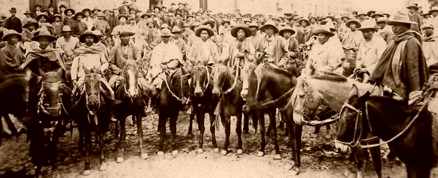
Unfortunately, shortly after being praised as liberators of the new countries, they found themselves expelled from their habitat by the reorganization of resources by the new leaders, dividing the precious productive land into plots suitable for large-scale agricultural production. Also, to foster the growth of the cities, in 1736, the new leaders prohibited hunting wild cattle without a license, which deprived the gauchos of their source of living. This prohibition forced the gauchos to choose between being excluded from society – as criminals – or being hired by the new owners of the land – as "peones" – or emigrating to the cities, where they would be partially integrated as "compadres."
During colonial times, the place of women in society was determined by racial and economic factors. The women of the elite class were subject to arranged marriages to create family alliances. The purpose of these alliances was to preserve Spanish traditions, promote religion at home and consolidate the model of family life. Women were responsible for maintaining family honor and fulfilling the ideal of virtue. The most critical moment of a woman's life at the time was her wedding day, which she was prepared for since childhood. Women were expected to be docile, respect the authority of their husbands and live within the confines of the home. Female education was entrusted to the Church to achieve success in this model, educating them in a domestic scheme of submission. The public role of a woman was to accompany her husband and attend charitable activities and Mass (a true female social center.) Women who were widowed took the reins of their husbands' businesses and managed their assets; if they did so successfully, they entered the male world and were able to interact with civil institutions.
For the mestizo woman, life was not limited to the home as they had to engage in productive work or service outside the house: trade, domestic labor (maids, laundresses, sewists, etc.), and handicrafts (hand-spinners, candle makers, and cigar makers). They also worked in grocery stores, which meant they had more contact with the broader society.
Although marriage was an ideal in their lives, this did not have the degree of complexity as in the elite class because there was no obligation to continue the family lineage. This left more room for sentimental marriage. Although chastity and marriage remained ideal for all women, the mestiza women were not held to the same standards. They received instruction only through Catechism and the teachings of the Bible, as well as productive activities.
Initially, the mestizo in general and, therefore, the mestizo woman was frowned upon by both Hispanic Creoles and Indians. But then, the whole society was crossbreeding, mixing, and becoming a hybrid; after that, the mestizo condition ceased to be defined accurately.
The role of indigenous people and indigenous women varied depending on their position within their community; it was different from being an elite member of a native community than a regular native.
After the arrival of the Spaniards, native women were responsible for transmitting traditional traits of indigenous culture (housework, trade, clothing, etc.). With the imposition of monogamy, which opposed the polygamous structure of the indigenous society, many women were left alone. Also, the increased mortality of native men due to hard work left more women alone, which led them to look for work. They were employed mainly as housemaids, where they acquired great power and were also active in trade. In this way, they learned to use the currency and learned the Spanish language even before the native men themselves.
With the reduction of indigenous peoples into personal service, slavery, etc., Spanish-Criollos imposed a new social structure, disintegrating the indigenous organization, resulting in a total integration into the Spanish-Criollo society at the cost of the destruction of the indigenous culture and social network. Thus, the role of indigenous women in the colony was determined by the needs and ambitions of the Spanish-Criollos and the Spanish Crown.
Because of the indigenous population decline, enslaved Black people were brought to America as a labor force for agriculture, domestic service, and farm work. Urban enslaved people were mainly housemaids, bakers, and laundresses. They were the property of married white women (becoming part of the homestead). They were objects, and property (living under worse conditions than indigenous or mestizo, although there were exceptions.)
During the Independence War, women had a prominent role, no less important than men.
The ideals of the women of Tango, of the "milongueras", were developed through these times. They value the nature of femininity, with its attributes of maternity, companionship with the male partner, independent-minded, capable of successfully taking on the tasks traditionally attributed to men when necessary.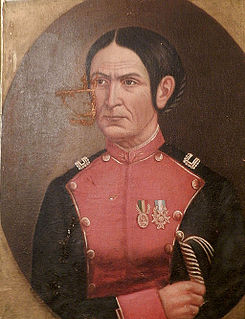 An example of the ideals of women can be seen in the life of Juana Azurduy de Padilla (1780-1860).
An example of the ideals of women can be seen in the life of Juana Azurduy de Padilla (1780-1860).
Juana descended from a mixed family and was orphaned at an early age. She spent the first years of her life in a convent.
In 1802 she married Manuel Ascencio Padilla, and they went on to have five children. After the outbreak of the independence revolution on May 25, 1810, Juana and her husband joined the pro-independence militias of the area that today belongs to Bolivia. Juana was one of many women who joined the fight.
Juana actively collaborated with her husband to organize the "squadrons", which joined the troops sent from Buenos Aires. During the first year of fighting, Juana was forced to abandon her children and was in combat on numerous occasions.
The government of Buenos Aires was impressed by her courage, and in recognition, in August 1816, it decided to provide Juana Azurduy the rank of Lieutenant Colonel. More recently, she was posthumously promoted to the position of General by Argentinian President Cristina Fernandez de Kirchner and Bolivian President Evo Morales.
"Yo soy la morocha,
la más agraciada,
la más renombrada
de esta población.
Soy la que al paisano
muy de madrugada
brinda un cimarrón.
Yo, con dulce acento,
junto a mi ranchito,
canto un estilito
con tierna pasión,
mientras que mi dueño
sale al trotecito
en su redomón.
Soy la morocha argentina,
la que no siente pesares
y alegre pasa la vida
con sus cantares.
Soy la gentil compañera
del noble gaucho porteño,
la que conserva el cariño
para su dueño.
Yo soy la morocha
de mirar ardiente,
la que en su alma siente
el fuego de amor.
Soy la que al criollito
más noble y valiente
ama con ardor.
En mi amado rancho,
bajo la enramada,
en noche plateada,
con dulce emoción,
le canto al pampero,
a mi patria amada
y a mi fiel amor.
Soy la morocha argentina,
la que no siente pesares
y alegre pasa la vida
con sus cantares.
Soy la gentil compañera
del noble gaucho porteño,
la que conserva el cariño
para su dueño."
“La Morocha”, Ángel Villoldo.
https://youtu.be/EmLbOirSNPc?rel=0
"¿Dónde están las mujeres aquéllas,
minas fieles, de gran corazón,
que en los bailes de Laura peleaban
cada cual defendiendo su amor?"
“Tiempos viejos”, Francisco Canaro, Manuel Romero.
https://youtu.be/V3SiAKLr_HY
Read
https://escuelatangoba.com/marcelosolis/history-of-tango-2/
No comments:
Post a Comment